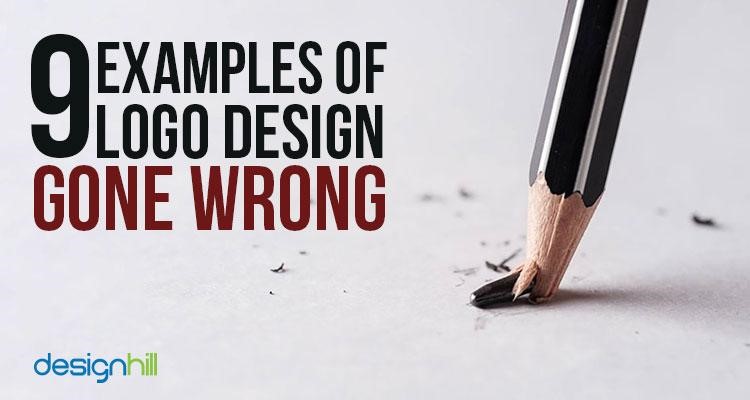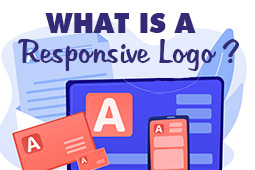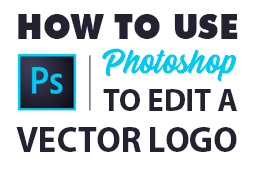How do we design the perfect logo? It is highly improbable to create it on the first try. It takes multiple iterations and attempts before the client finally settles on the final one. This scenario is quite typical in all aspects of life. Success and Failure are two facets of the coin. We have seen our share of both, and have utilized the experience for the betterment of humankind.

There are also instances where the wrong design has managed to grab the consumer attention. However, some designs are just wrong, and it should be avoided at all costs. These designs can serve as a useful learning platform for the design community.
The plain font
It is a common mistake among the mom and pop businesses. It is quite natural for people to assume that a color font would qualify as a logo. They highlight the full name of the company with an artistic font and believe that it surfaces the properties of the logo. This ignorance can be detrimental in the long run. The font selected for a logo design is done based on the target audience, brand vision, and the product portfolio. A bold or a 3D font will never do the trick.
The literal mnemonic
Mnemonic or icons add the fun element to the logo design. They neutralize the seriousness of the logo, and help the consumer to understand the logo in a shorter duration. This mnemonic is generally custom made to meet the brand's requirements. Though there are specific icons which are symbolic representations of the sectors, there is no defined rule that they have to be incorporated. Some companies use the literal mnemonic which is available online, and this is a complete disaster.
The odd alignment
The design industry has gladly welcomed chaos in its work. People have learned to appreciate the beauty in it. Nevertheless, it should be ordered chaos, and there has to be some symmetry in it. The logo design is created in a horizontal plane for a reason. It makes it calmer to fit into the various collaterals. The consumer has a better affliction to the logo when it is pleasing and stress-free to the eye. Vertical or shapeless alignment is a definite no in this industry.
The letter spacing
The space between each letter has a psychosomatic meaning hidden in it. It has the power to encourage or discourage a reader from building connectivity to it. This is the main reason we feel relaxed to read some books while feel stressed in others. The same logic applies to the letters in the logo design. Maintaining uniformity with the right amount of white space is essential. This will improve the readability factor and also make it attractive to the viewers. Uneven spacing between letters should be avoided at all costs.
The hanging elements
It can be impossible to achieve a perfectly straight line when it comes to creating a custom logo. There are few overspills which we cannot avoid, and it adds more value to the whole entity. There has to be synchrony between the brand's name and the icon. If the icon is not placed in harmony with the content, then it would be a disaster. The mnemonic can be placed either before or after the brand name for better visualization. Connectivity is vital when it comes to logo designing.
The uneven placement
What is the common factor seen in all significant designs? There is an invisible line on which the logo and the mnemonic are placed. This line need not necessarily be straight. It can be a curved line or even a circle. However, it cannot be set in a random order. It could be confusing to the viewer and disrupt accord when used in other collaterals. Maintaining some order in the entire design is essential. Even the logos of the major brands have failed because of this uneven placement.
The multiple icons
An icon used in the logo design is custom made to meet the individual needs of the company. There might be numerous elements which are used in the creation process. However, it is unified to form a single mnemonic which communicates the intended message. The use of these icons as individual elements and using more than two mnemonics is a classic example of a bad logo design. No matter how well it is placed, it does not achieve the purpose.
The tagline positioning
The tagline is a one-line statement of the brand’s vision. This can be included as a part of the logo, and its position plays a vital role in the success of the logo. The ideal place for positioning the tagline would at the bottom. The side is too small to fit the content, and the top is not the place. It should always below the brand name to ensure proper visibility.
The color choice
The color gives life and value to the logo design. Usually, two colors are used in the logo in addition to black and white. These two colors should complement each other and enhance the logo design. The shades should not overpower as it will increase the stress to the eye. Brands are known to use a hue for font and the other for the mnemonic. Though the use of multiple colors is not prohibited, it is not recommended. This usage might disrupt the brand message and can cause a significant impact in the collaterals.
Conclusion
The logo design creates the first impression of the company. It has the power to make or break the brand image. There are important rules of logo design that you must respect. Most consumers do not appreciate a good logo design. However, bad design does get criticism, and they can create a negative impact on the product. It is quite contagious, and caution should be taken to make the right choice. This approach is even required while creating a custom logo for a specific campaign. Through experimentation and uniqueness is encouraged, it is essential to make it intellectually exciting and aesthetically pleasing. Companies can organize feedback sessions among employees and consumer to understand if they are on the right path.





